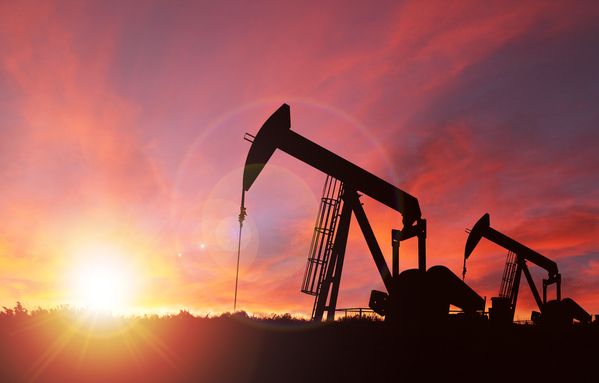
Image source: Getty Images.
Shares of Helmerich & Payne (HP 0.63%) haven't felt the impact of the industry downturn as much as some of its peers, but that doesn't mean they have been unscathed. The stock is down a little more than 50% since oil prices started to decline in earnest in July 2014.
There are some reasons that things will start to get better, though, as there are a few catalysts that could help Helmerich & Payne out of this funk. Here's a quick look at three reasons why investors should be hopeful for better times ahead.
1. Industry scrapping older rigs
The land rig industry in the U.S. is in the middle of a major transformation. In less than a decade, horizontal drilling techniques to extract oil and gas have gone from a token part of the industry to the dominant force.

Image source: Helmerich & Payne investor presentation.
Rig owners like Helmerich & Payne have done a decent job of meeting the demand for these complex drilling jobs with high spec rigs capable of handling the work. Trouble is, though, that there are now a ton of these older, less capable rigs left available. Even though they aren't as good at getting the job done, having all of these rigs available gives producers some negotiating leverage when contracting a new rig.
As these older rigs go out of service and are ultimately scrapped, it should give a little more advantage to land drillers when negotiating contract rates, which in turn should increase profit margins. Helmerich & Payne has always been able to produce a slight market premium for its rigs since they are arguably better equipped rigs, but a rising tide should put an even bigger premium on newly contracted rigs and produce higher profits.
2. Better well economics for producers = more business
As much as lower oil prices and how it has made the industry suffer has grabbed the headlines over the past couple of years, one thing that has been overlooked a bit is how much producers have improved the economics of shale wells. Only a few years ago, shale was considered a fringe source of oil that required oil prices well above $80-$90 per barrel to be economically viable.
As companies have learned how to get more out of each well through better drilling techniques, more prudent use of resources such as recycling fracking water, and building out support infrastructure have made shale one of the lower cost sources of oil and gas internationally. Some companies claim that their cash breakeven costs are in the range of $30-$40 a barrel -- actually covering interest and depreciation costs is a different story for another time, though.
What this ultimately means is that drilling activity in the U.S. isn't at as much risk of getting cut as other parts of the world. Most of the capital spending cuts globally have been related to offshore and deepwater developments. As production from these other sources wane from a lack of investment, it will allow shale drilling to fill that gap at a relatively low cost. This, in turn, should increase drilling activity and demand for Helmerich & Payne's rigs.
Improved well economics cuts both ways, however, because producers now get more out of every rig in the field than they did before and may not need as many rigs to maintain or even grow production like they did before. However, if shale remains such a cheap source of oil, demand for it and the rigs that can drill for it should rise.
3. Expanding its international fleet
When you drill down into H&P's earnings, it's clear that the company's prospects live and die with the U.S. drilling market. Even today when drilling activity in this country is incredibly low and less than 25% of the company's U.S. fleet is being used, that business segment still makes up more than three-quarters of operational income.
Part of the reason that Helmerich & Payne's business is overly reliant on the U.S. is that its fleet is very new and specifically designed to handle the complex drilling jobs that shale reservoirs require. But outside of the U.S. and Canada, most land drilling is for conventional reservoirs and hasn't required the specifications of Helmerich & Payne's fleet. This dynamic is starting to change, though. In places with abundant shale resources -- Argentina, for example -- there is going to be a larger demand for the company's rigs.
Another thing to consider about international shale drilling is that most of it is being done by the large integrated majors like ExxonMobil and Chevron. These are companies that Helmerich & Payne has a good working relationship with in the U.S. and typically contract land rigs for longer stretches of time than smaller independent drillers. By making more of its advanced fleet available to these players internationally, it would allow the company to take advantage of the growing interest in shale internationally and give it a more robust earnings stream from outside the U.S.
What a Fool believes
The drilling market has not been kind to Helmerich & Payne over the past couple years, but management has done a commendable job of keeping the company profitable by cutting costs and having the foresight to maintain balance sheet discipline during the boom times. While it's not a foregone certainty that drilling demand is coming back in the U.S. soon, the company has said that it has been fielding calls from producers that are testing the waters.
Higher drilling activity, coupled with a scrapping of older rigs and lowering costs for shale, should help boost Helmerich & Payne's immediate prospects. Longer term, though, moving some rigs overseas to capture some of the growing interest in shale drilling there would give the company an additional growth lever to pull in the future. All of these things could have a significant impact on the stock in a good way.




